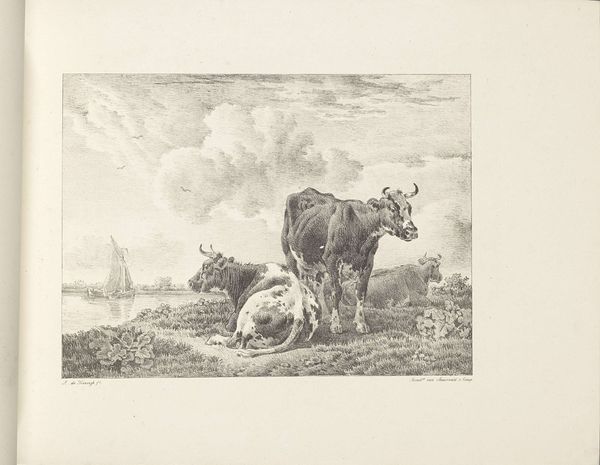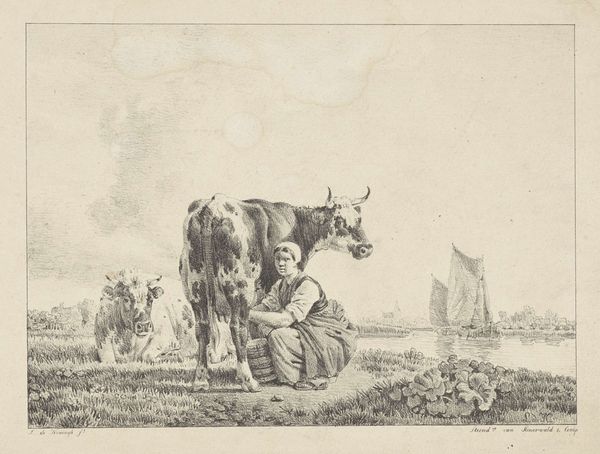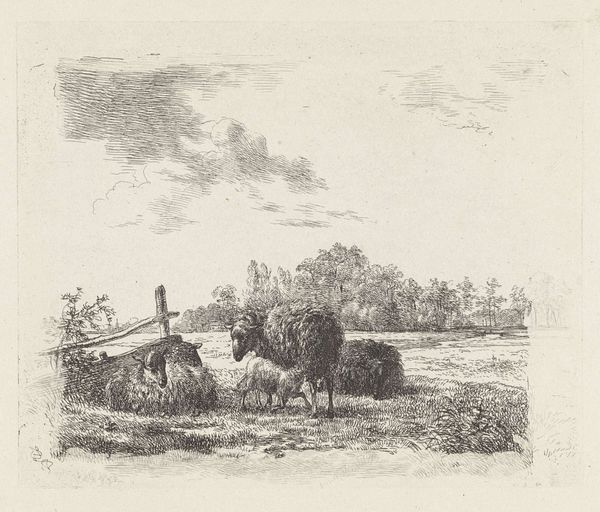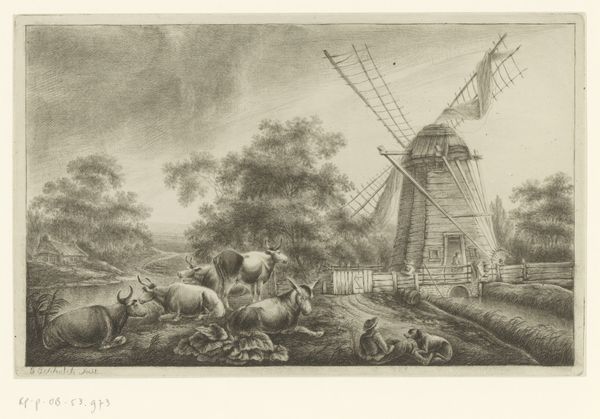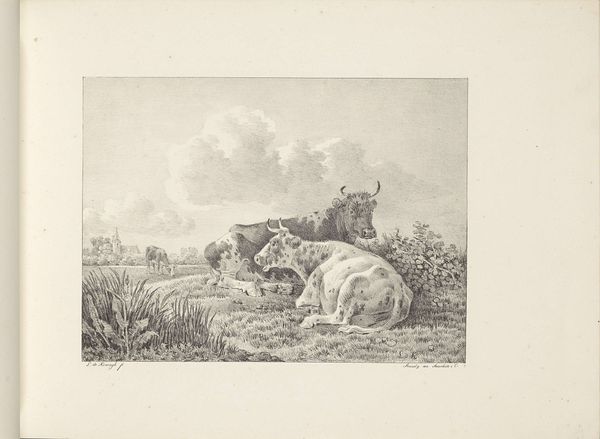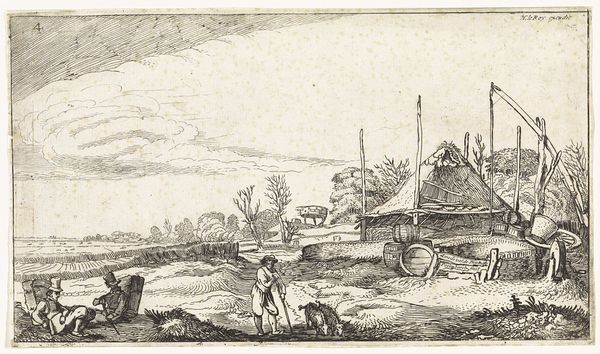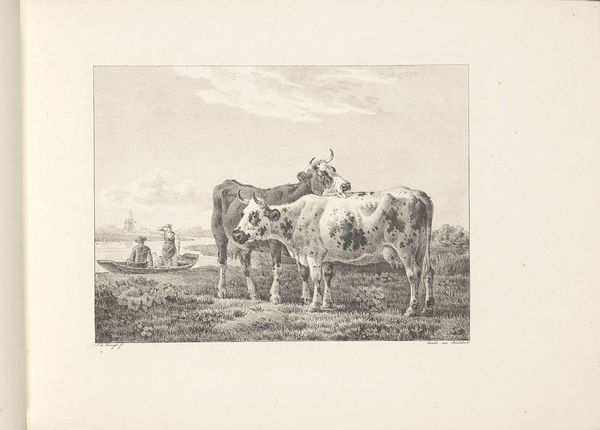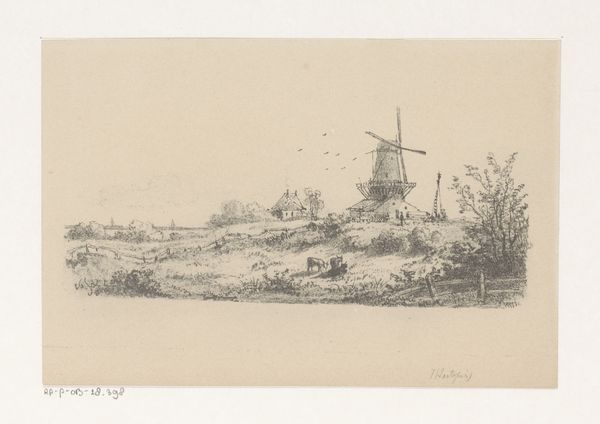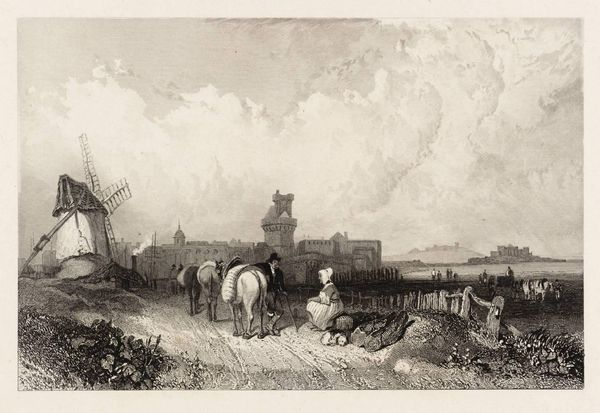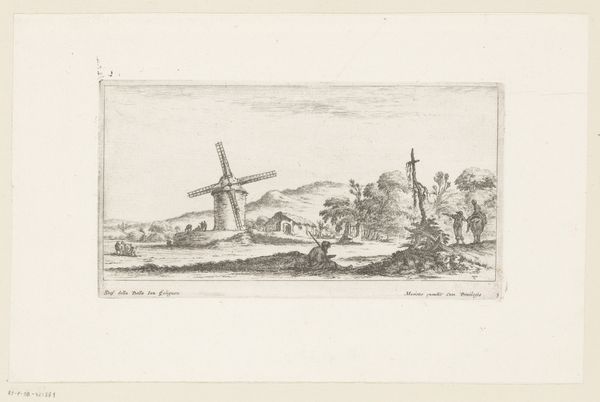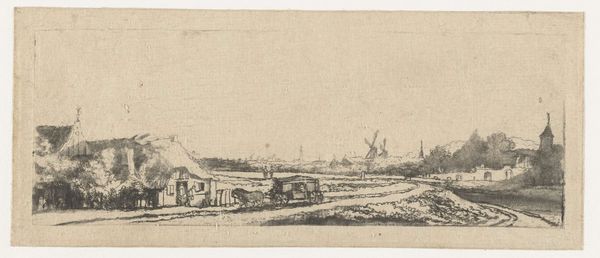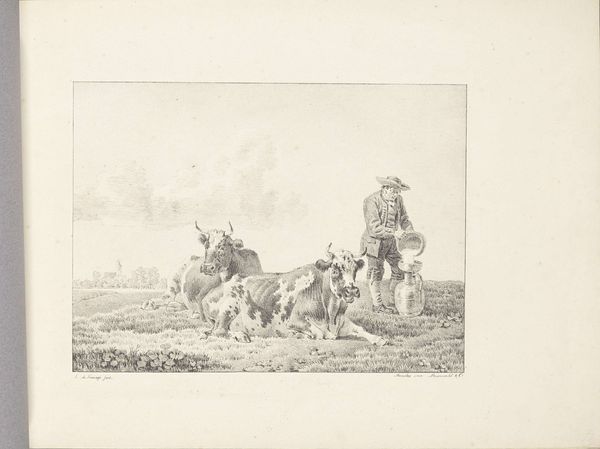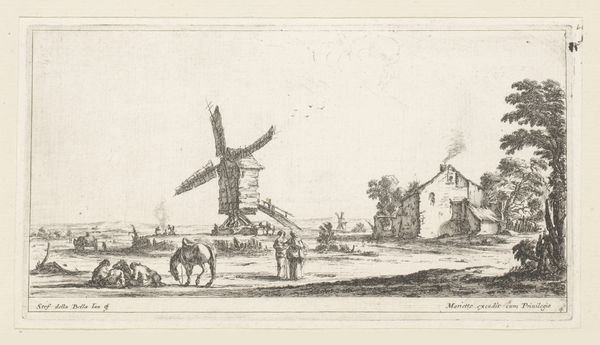
print, etching, engraving
#
dutch-golden-age
# print
#
etching
#
landscape
#
engraving
#
realism
Dimensions: height 325 mm, width 460 mm
Copyright: Rijks Museum: Open Domain
Leendert de Koningh created "Two Cows and a Mill by the Water" using etching techniques. This printmaking process involves using acid to cut into a metal plate, traditionally copper or zinc, to create a design. The image's strength lies in the intricate lines and subtle tonal variations achieved through the etching process. Notice how the fine lines create texture in the cows' fur and define the distant windmill. The etched lines allow for a level of detail that captures the pastoral scene's tranquil atmosphere. De Koningh, active in the late 18th and early 19th centuries, lived during a time when printmaking was essential for disseminating images. This etching reflects a growing interest in landscape and rural life, connecting it to broader social issues of agrarian economies and the relationship between humanity and nature. It prompts us to consider the labor involved in both the artistic creation and the agricultural landscape depicted. By focusing on the materials and processes, we gain insight into the artwork's cultural significance and challenge traditional distinctions between art and craft.
Comments
No comments
Be the first to comment and join the conversation on the ultimate creative platform.
